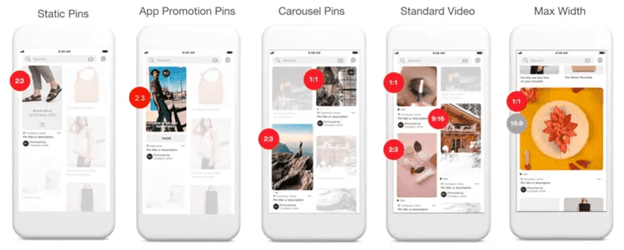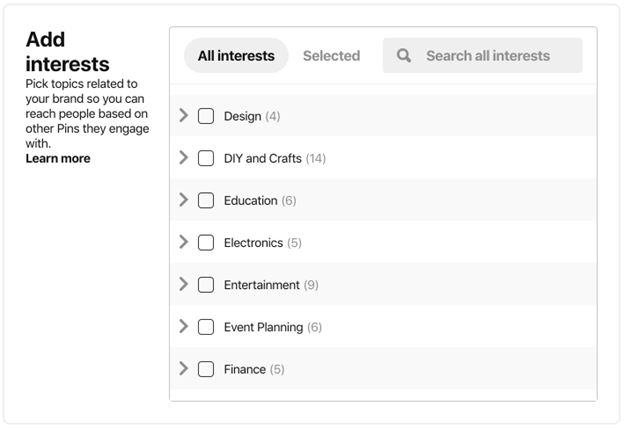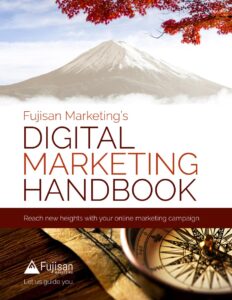While social media advertising has become a critical component of the online marketing ecosystem, some platforms are more high-profile than others. Instagram, Facebook, YouTube — those tend to be the first place many businesses and brands think of, but thinking outside that obvious box, there are other avenues that can be more effective and efficient if you play it right.
Enter Pinterest.
Pinterest has been around for well over a decade and is still going strong — and arguably is even better-suited to the current era of visual content than any time in its previous history. If you haven’t spent time on it, it’s a social media platform giving users a place to create, share, and save ideas through images and videos. People use this for everything from clothing, home decor, recipes, style of all sorts, and more.
Because of the nature of Pinterest, it can be a super effective tool to raise awareness for your brand, to harbor consideration, and to actively sell your products. Even better, it’s arguably under-utilized in an environment where too many brands just don’t think any farther than Facebook or Instagram for advertising.
Here’s more on the basics of how to advertise with Pinterest:
Types of Pinterest Ads
Image Source: Mayple.com
When advertising on Pinterest, you have nine different options for what formats to use. Whichever is best-suited to you depends on your goals, offerings, and assets. They are:
- Standard pins
- Video pins
- Carousel pins
- Shopping pins
- Collections
- Quiz pins
- Showcase pins
- Lead ads
- Premier spotlight
And they work as follows:
Standard pins: Essentially just boosting a preexisting pin, standard pins are the most basic Pinterest ads which appear as a normal pin but with a “promoted by” label. While they’re super simple, they can still be quite effective.
Video pins: Just like a standard pin, but in video format instead of image. The aspect ratio for a video pin can be 1:1, 2:3, 4:5, or 9:16, and we recommend you keep these between about six to 15 seconds — although you can make a video pin up to 15 whole minutes.
Carousel pins: Like carousel ads on different platforms, carousel pins include two to five images through which users can swipe. When a user saves an image from a carousel, the rest of the carousel is saved with it. Available aspect ratios: 1:1 or 2:3.
Shopping pins: These require you to have a catalog of items before running, and from there your product information is used to target an audience. (You can choose your own targeting or add retargeting, too.) Otherwise, these appear like standard pins. Available aspect ratio: 2:3.
Collections: Like shopping pins, but promoting multiple products at once and only available on mobile. Contents-wise, they require one primary image (or video), followed by at least three supporting images. Available aspect ratios: 1:1 or 2:3.
Quiz pins: These formats allow your audience to show their opinion via voting in your quiz. For this, you’ll need to create a cover pin and a results pin in a 2:3 aspect ratio. A quiz pin is designed to be engaging and hyper-relevant to its audience.
Showcase pins: Another mobile-exclusive format, these show many pins in one and can link to different pages within the one ad. Available aspect ratios and specs: 2:3, 1:1, with a three to 60-second length for videos.
Lead ads: A new ad type, these offer native forms on Pinterest to gather information voluntarily from users through a questionnaire of up to 10 questions. You can refer to responses for 30 days after submission. Available aspect ratio: 2:3.
Premiere Spotlight: With limited availability, Premiere Spotlight is the maximum-width video that blasts your ad out for one day — and is ideal for product launches, seasonal content, or anything where you want to reach a large scale of people with maximum impact. It requires a reservation and for you to contact your account team.
So, these are your options for different types of ads — but how can you approach these differently?
Targeting on Pinterest
Here, you’ve similarly got many options. These targeting settings are:
- Audience
- Actalike audience
- Interest
- Keywords
- Demographics
- Placement
- Expanded
Each of these approaches different audiences based on different factors. To elaborate on them:
Audience: These target users in an “audience” who have similar characteristics. For example, if they’re in a customer list, site visitors, or people who have interacted with your Pinterest account.
Actalike audience: This targets users who match certain characteristics that align with a preexisting audience like above.
Interest: Targets users who’ve demonstrated they’re interested in topics related to your ad.
Keywords: Targets users who are searching for certain keywords or phrases on Pinterest.
Demographics: This is what you might think “audience” would be — i.e. targeting based on demographics such as gender, age, location, language, and device.
Placement: Instead of being based on your target audience’s characteristics, this is targeting based on where you want your ads to appear — for example, on the home feed, search function, or near related pins.
Performance+: This is an expanded targeting option where Pinterest will automatically broaden your audience targeting to reach people searching for similar terms or interests to your ad.
Pinterest has some useful examples of these targeting choices in action on their own site, which we recommend referring to if you ever need more guidance during the process of setting up targeting.
Benefits of Advertising on Pinterest
So, if these are the “what” of Pinterest advertising’s basics, how about the “why?”
To start with, while Pinterest isn’t the same level of huge as, say, Instagram or TikTok, it’s much bigger than many people give it credit for: Pinterest has well over 500 million monthly active users.
And, unlike other social media platforms, people come to Pinterest specifically to get inspired — that means you’re reaching people who, more than anywhere else, want to want your product. According to a study commissioned by Pinterest in the summer of 2022, 80% of people who pin weekly say they feel “inspired by the shopping experience” there. It’s an easy platform to link, the site is accessible, and users want to be made aware of brands and products on there, making it ideal for spreading awareness.
Furthermore, Pinterest skews disproportionately towards Gen Z and, ironically at the same time, those with higher disposable income. Both of these are more likely than others to be enthusiastic purchasers of goods that inspire them.
Between the average Pinterest user and the perspective cultivated by Pinterest’s platform — AKA inspiring users towards certain looks and ideas — this means you’re reaching a highly-receptive audience, making it a cost-effective advertising option.
For example, in action when compared to, say, Instagram — another hyper-visual social platform — Pinterest averages between $0.10 to $1.50 per click or $2 to $5 per mille. The same on Instagram would cost on average $0.20 to $2 per click or about $6.70 per mille.
Essentially, as long as you do it right, you’re reaching an audience that’s already further down your marketing funnel and more receptive to what you’re showing them.
Whether you’re focused on spreading broader awareness or on increasing conversions (or the steps in between), Pinterest is a platform that’s lower profile than many other social media sites but you shouldn’t overlook if it matches your goals.
Beyond paid advertising, it’s also useful for promoting awareness of your brand simply through organic reach by having a presence there.
If you have lots of visual assets and sell products that align with Pinterest’s aspirational users, it can be an incredibly effective and cost-efficient platform — both to spread awareness of your brand and sell what you’ve got to users who are particularly interested.






